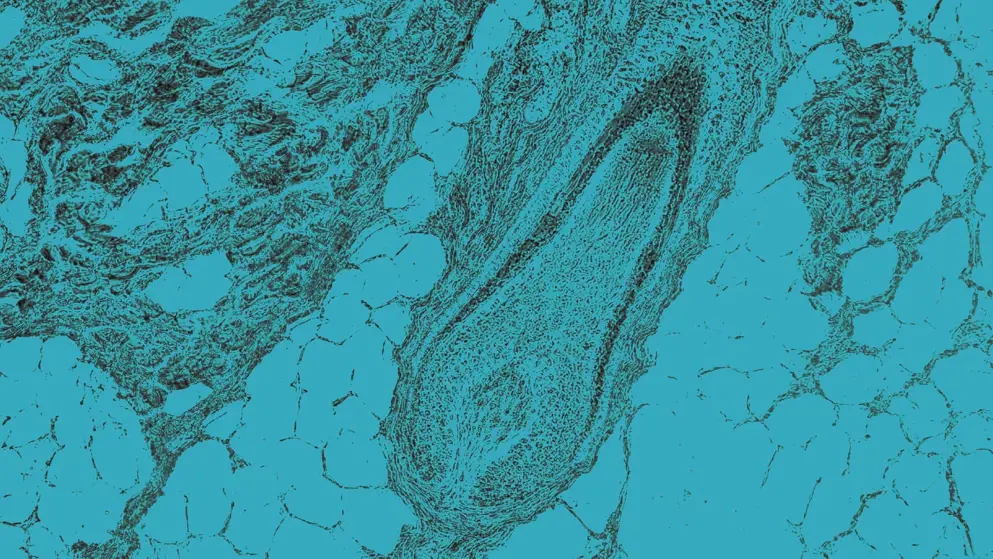
Alopecia areata
Alopecia areata (AA) is caused by the immune system erroneously attacking hair follicles, leading to inflammation. While researchers are not entirely sure why this immune attack occurs, they suspect that both genetic and environmental factors contribute. AA mainly causes hair loss, though it can sometimes cause changes in the nails, such as pits. People with this condition are generally healthy and exhibit no other symptoms.
How common is AA?
Approximately 2% of the global population will experience AA at some point during their lifetime, meaning approximately 160 million people have had or will have AA.
Who is most at risk?
While AA can affect anyone, regardless of gender, race, or age, it is most common in teens, twenties, and thirties. It tends to be more severe in children under 10. Autoimmune diseases and allergic conditions increase the risk of developing AA. Emotional stress or illness might trigger it, but often there's no clear cause.
How does AA impact quality of life?
AA has a negative impact on mental health, which can lead to anxiety, depression, suicidal thoughts, and increased psychiatric hospitalizations. People with AA may also have poorer attendance and productivity at work/school, likely due to new-onset anxiety/depression or visible hair loss. Overall, AA’s impact goes far beyond aesthetic considerations, negatively impacting numerous aspects of an individual’s life.
What treatments are available for AA?
Treatments for AA include Janus kinase (JAK) inhibitors, corticosteroids (oral and injectable methods available), immunosuppressants, and other medications that inhibit the disease process. The main aim of therapy is to prevent the immune system from attacking hair follicles and promote the regrowth of hair.
Developed by EPG Health for Medthority, independently of any sponsor.
Addressing inclusivity in AA assessment
View “Inclusive Care in Alopecia” for an in-depth look at how to better support skin of color populations with alopecia areata.
of interest
are looking at
saved
next event
Related news and insights
Guidelines
References
- Harries M, Macbeth AE, Holmes S, et al. The epidemiology of alopecia areata: a population-based cohort study in UK primary care. Br J Dermatol. 2022;186(2):257–265.
- Villasante Fricke AC, Miteva M. Epidemiology and burden of alopecia areata: a systematic review. Clin Cosmet Investig Dermatol. 2015;8:397–403.
- Dainichi T, Kabashima K. Alopecia areata: What's new in epidemiology, pathogenesis, diagnosis, and therapeutic options? J Dermatol Sci. 2017;86(1):3–12.
- Mirzoyev SA, Schrum AG, Davis MDP, Torgerson RR. Lifetime incidence risk of alopecia areata estimated at 2.1% by Rochester Epidemiology Project, 1990–2009. J Invest Dermatol. 2014;134(4):1141–1142.
- Zhang T, Nie Y. Prediction of the Risk of Alopecia Areata Progressing to Alopecia Totalis and Alopecia Universalis: Biomarker Development with Bioinformatics Analysis and Machine Learning. Dermatol. 2022;238(2):386–396.
- Simakou T, Butcher JP, Reid S, Henriquez FL. Alopecia areata: A multifactorial autoimmune condition. J Autoimmun. 2019;98:74–85.
- Pratt CH, King LE, Jr., Messenger AG, Christiano AM, Sundberg JP. Alopecia areata. Nat Rev Dis Prim. 2017;3:17011.
- Peterle L, Sanfilippo S, Borgia F, Cicero N, Gangemi S. Alopecia Areata: A Review of the Role of Oxidative Stress, Possible Biomarkers, and Potential Novel Therapeutic Approaches. Antiox. 2023;12(1):135.
- Lintzeri DA, Constantinou A, Hillmann K, Ghoreschi K, Vogt A, Blume‐Peytavi U. Alopecia areata – Current understanding and management. J Deuts Dermatolo Gesell. 2022;20(1):59–90.
- Olsen EA, Roberts J, Sperling L. Objective outcome measures: Collecting meaningful data on alopecia areata. J Am Acad Dermatol. 2018;79(3):470–478.
- Maloh J, Engel T, Natarelli N, Nong Y, Zufall A, Sivamani RK. Systematic Review of Psychological Interventions for Quality of Life, Mental Health, and Hair Growth in Alopecia Areata and Scarring Alopecia. J Clin Med. 2023;12(3):964.



